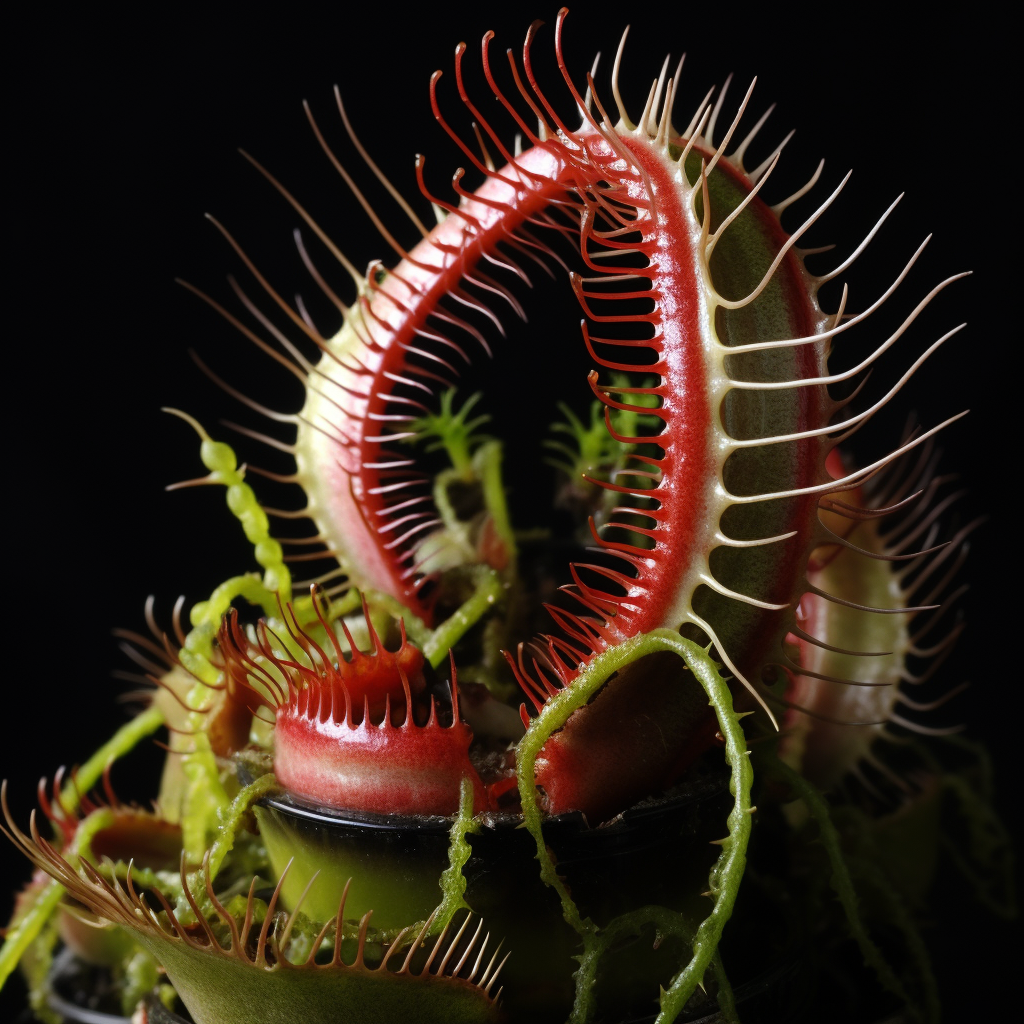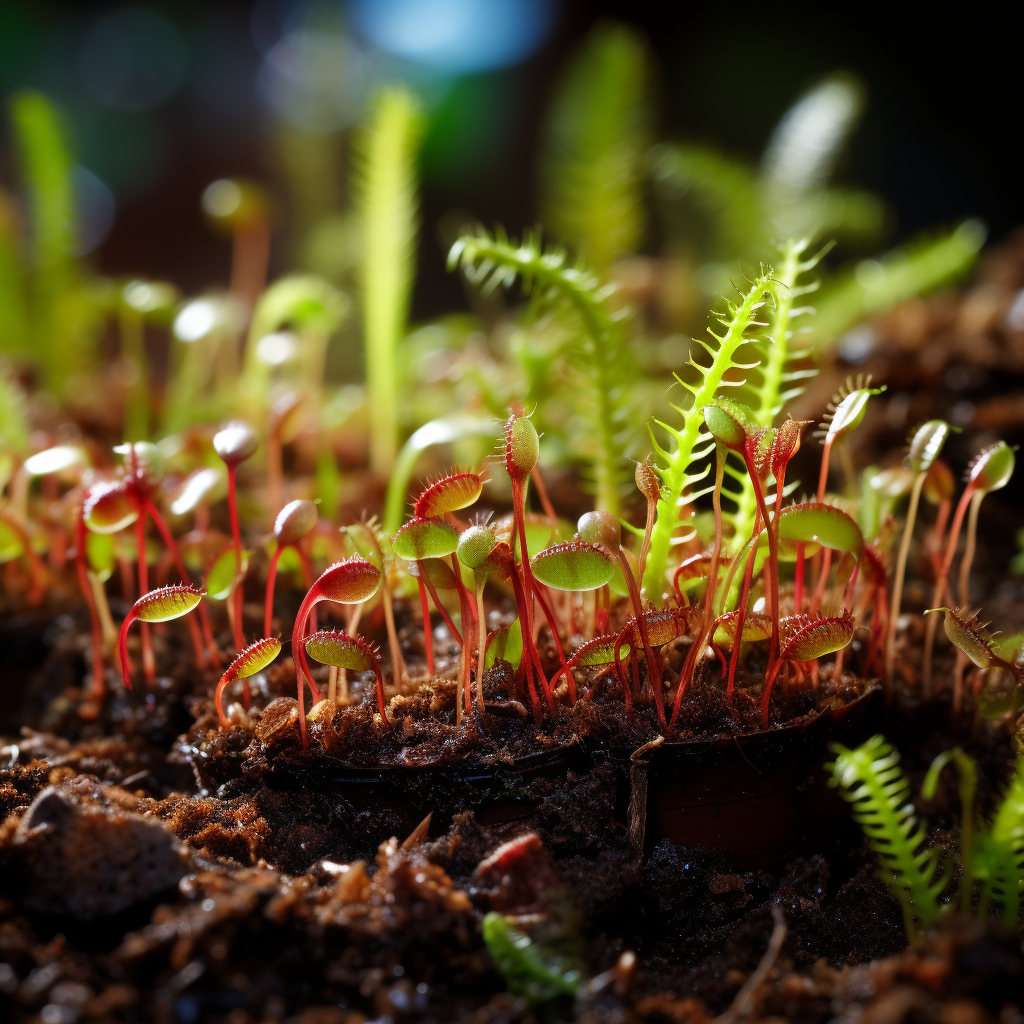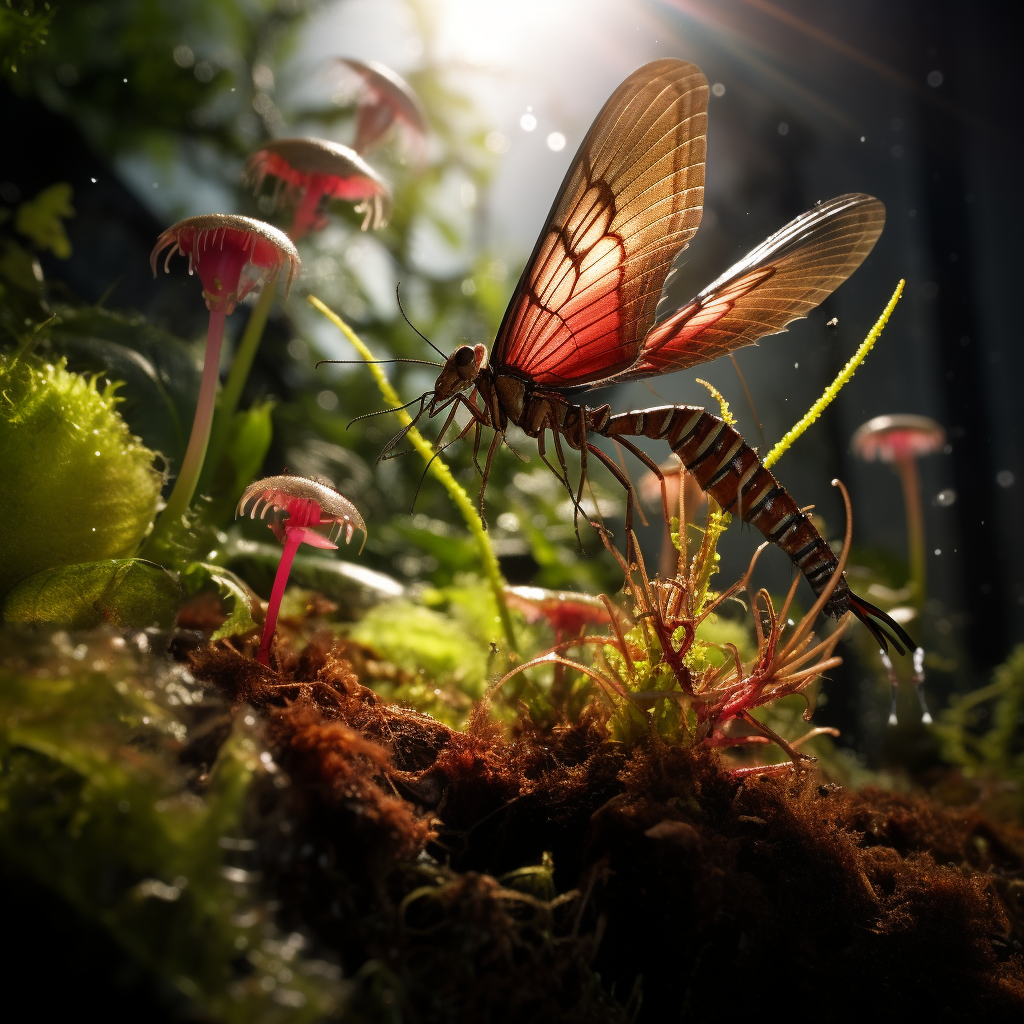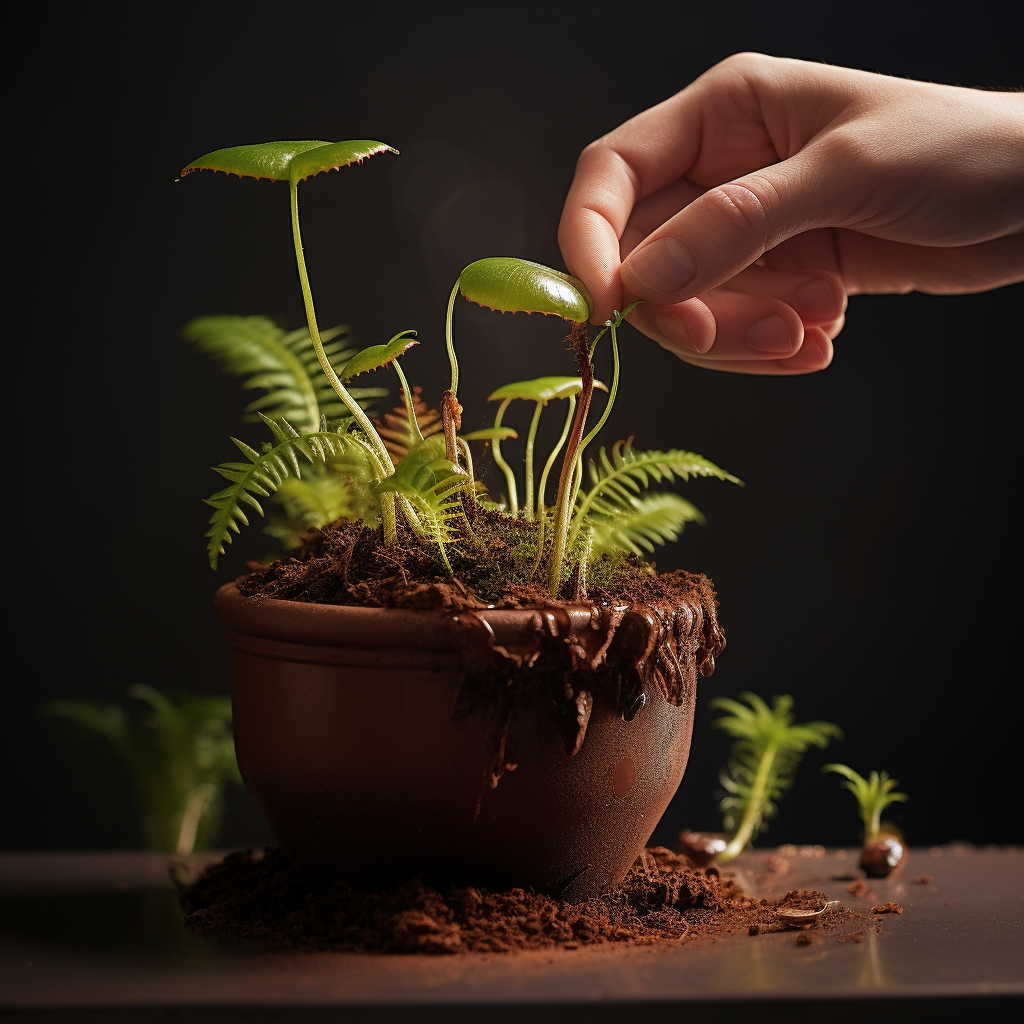
Have you ever marveled at the fascinating carnivorous plants known as venus fly traps? These captivating creatures, with their snap-trap jaws and voracious appetites for unsuspecting insects, have captured the imaginations of plant enthusiasts and casual observers alike. And if you’ve ever wondered how to cultivate these extraordinary plants from scratch, you’re in for a treat.
Unlike many plants that require specialized knowledge or expensive equipment to grow successfully, venus fly traps can be surprisingly easy to cultivate from seeds. In fact, with a bit of patience and the right care, you too can transform your home into a vibrant habitat for these captivating carnivores.
Embarking on this journey of growing venus fly traps from seeds is not only a rewarding experience but also a cost-effective alternative to purchasing mature plants. Plus, the satisfaction of nurturing these fascinating creatures from their humble beginnings is simply unparalleled.
So, if you’re ready to delve into the world of venus fly trap cultivation from seeds, prepare to be amazed by the resilience, beauty, and unique adaptations of these extraordinary plants. Together, we’ll uncover the secrets to successfully raising these carnivorous wonders from their tiny seeds into thriving specimens that will bring an air of intrigue and wonder to your home.
Venus Fly Trap Basics
Before we delve into the intricacies of cultivating venus fly traps from seeds, let’s take a moment to appreciate the extraordinary nature of these captivating plants. Venus fly traps, also known as Dionaea muscipula, belong to the family Droseraceae and are native to the nutrient-poor bogs of North and South Carolina. These fascinating plants have evolved an ingenious adaptation to supplement their diet with insects, providing them with essential nutrients that their otherwise meager environment lacks.
Imagine a plant with hinged leaves that resemble open jaws, lined with sensitive trigger hairs. When an unsuspecting insect lands on one of these hairs, the trap snaps shut, encasing the prey within its spiky confines. Over the next few days, digestive enzymes are secreted, breaking down the insect’s body and releasing valuable nutrients that the plant absorbs.
This remarkable carnivorous mechanism has not only captured the imagination of plant enthusiasts but has also made venus fly traps a popular subject for scientific study. Researchers have delved into the intricate workings of their trapping mechanism, exploring the biomechanics of their jaws, the sensitivity of their trigger hairs, and the efficiency of their digestive process.
As we embark on our journey of growing venus fly traps from seeds, it’s important to recognize that these plants are not merely curiosities but also fascinating examples of evolutionary adaptation. Their unique carnivorous nature is a testament to the remarkable diversity and ingenuity found within the plant kingdom.
So, as we nurture these tiny seeds into thriving venus fly traps, let us also appreciate the intricate biology and ecological significance of these extraordinary plants. After all, growing venus fly traps from seeds is not just about cultivating captivating carnivores; it’s about connecting with the wonders of nature and gaining a deeper appreciation for the intricate balance of life on Earth.

Collecting and Stratifying Venus Fly Trap Seeds
Now that we’ve delved into the fascinating world of venus fly traps, it’s time to get our hands dirty and embark on the exciting task of collecting and preparing their seeds for germination. This process may seem daunting at first, but with a bit of patience and attention to detail, you’ll have a bountiful supply of venus fly trap seeds ready to transform into thriving carnivores.
First, let’s address the misconception that stratifying venus fly trap seeds is necessary. Unlike many plants that require a period of cold treatment to break dormancy, venus fly trap seeds germinate readily without stratification. This means that you can save yourself the hassle of refrigerating or exposing the seeds to cold temperatures and proceed directly to the sowing process.
To collect venus fly trap seeds, you’ll need to wait until the seed pods have fully ripened and turned a dark brown color. This typically occurs in late summer or early fall. Once the pods are ripe, carefully remove them from the plant and allow them to dry out completely in a warm, well-ventilated area.
Once the seed pods are dry, gently open them to release the tiny, dust-like seeds. Handle the seeds with care, as they are delicate and easily damaged. You can store the seeds in an airtight container in the refrigerator for future use, ensuring they remain viable for germination.
With your supply of venus fly trap seeds ready, we’re now ready to embark on the exciting journey of transforming these tiny seeds into thriving carnivorous wonders. So, let’s gather our supplies, prepare the growing medium, and sow the seeds with anticipation, eager to witness the remarkable transformation of these fascinating plants.

Sowing Venus Fly Trap Seeds
With our supply of venus fly trap seeds ready and our excitement mounting, it’s time to embark on the thrilling task of sowing these tiny seeds into their new home. This delicate process requires a gentle touch, a watchful eye, and a touch of anticipation as we witness the first steps of these extraordinary plants’ journey.
To create the perfect environment for germination, we’ll need a shallow container with drainage holes, a sterile growing medium, and a spray bottle filled with distilled water. Prepare a mixture of 50% peat moss and 50% silica sand, ensuring it’s moist but not soggy. Fill the container with this mixture, leaving about an inch of space at the top.
Now comes the delicate part: sowing the seeds. Gently scatter the tiny seeds evenly over the surface of the growing medium. Avoid burying the seeds, as they need light to germinate. Instead, use a very fine dusting of sphagnum peat moss to cover the seeds lightly, providing moisture and preventing them from drying out.
Once the seeds are sown, gently spray the surface of the growing medium with distilled water, ensuring it’s thoroughly moistened but not overly saturated. The aim is to create a humid environment that encourages germination without waterlogging the seeds.
Place the container in a warm, bright location, ideally receiving indirect sunlight. Avoid direct sunlight, as this can overheat the growing medium and hinder germination. Cover the container with a clear plastic lid or cling film to maintain humidity.
The waiting game begins! Venus fly trap seeds typically germinate within 13 to 35 days, depending on the temperature and humidity conditions. During this time, check the container regularly and gently spray the surface of the growing medium to maintain moisture.
Once germination begins, you’ll witness tiny green shoots emerging from the soil. These are the first signs of your venus fly traps taking root in their new home. As the seedlings develop, gradually remove the lid or cling film to allow for air circulation.
With patience, care, and a touch of excitement, you’ll soon have a thriving colony of venus fly traps growing from your carefully sown seeds. These carnivorous wonders will bring a touch of intrigue and fascination to your home, reminding you of the remarkable diversity and resilience of the natural world.
Caring for Venus Fly Trap Seedlings
As your tiny venus fly trap seedlings emerge from the soil, their delicate forms require your nurturing touch and vigilant care. These miniature carnivores, with their promise of captivating traps and voracious appetites, depend on your expertise to guide them through their early stages of development.
First and foremost, ensure your seedlings receive ample sunlight, ideally around 3-4 hours of indirect light daily. Avoid direct sunlight, as this can scorch their tender leaves. If natural light is limited, consider supplementing with grow lights to provide the necessary illumination.
Watering is another crucial aspect of seedling care. Use distilled water or rainwater, as these are free from minerals that can harm your venus fly traps. Avoid tap water, as it often contains chlorine and other chemicals that can be detrimental to their growth.
The key to watering is to keep the growing medium moist but not soggy. Overwatering can lead to root rot, while underwatering can stunt their growth. Check the soil regularly and water when the top inch feels slightly dry.
Humidity is another important factor in seedling development. Aim to maintain a humidity level of around 50-60%. You can achieve this by covering the container with a clear plastic lid or misting the seedlings regularly.
As your seedlings grow, you’ll need to thin them if they become overcrowded. Gently remove excess seedlings to provide adequate space for the remaining plants to thrive.
Keep an eye out for pests and diseases, which can be particularly harmful to young seedlings. Inspect your plants regularly for signs of infestation or infection, and take appropriate measures if necessary.
With attentive care and a touch of patience, your venus fly trap seedlings will gradually transform into mature carnivores, ready to captivate you with their unique trapping mechanism and voracious appetites. Remember, every step you take in nurturing these fascinating plants is a testament to your dedication and expertise as a plant enthusiast.
Transplanting Venus Fly Trap Seedlings

As your venus fly trap seedlings mature and their roots develop, the time comes to transplant them into individual pots. This delicate process requires careful handling, a suitable potting mix, and a gentle touch to ensure the continued growth and well-being of your miniature carnivores.
To prepare for transplanting, select individual pots with drainage holes that are slightly larger than the current containers housing your seedlings. Fill these pots with a sterile mixture of 50% peat moss and 50% silica sand, ensuring it’s moist but not soggy.
Gently remove your seedlings from their current containers, taking care not to damage their delicate roots. Use a moist wooden toothpick to gently loosen the roots if they are tightly bound to the growing medium.
Create a small hole in the center of the potting mix in each new pot. Carefully place the seedling’s roots into the hole, ensuring the base of the plant sits slightly above the soil surface. Gently fill in the space around the roots with potting mix, taking care not to bury the plant too deeply.
Water the newly transplanted seedlings gently, ensuring the potting mix is moist but not saturated. Place the pots in a warm, bright location with indirect sunlight.
Monitor the transplanted seedlings closely for the first few weeks, ensuring they receive adequate moisture and light. Gradually acclimatize them to their new environment by reducing humidity over time.
As your transplanted seedlings continue to grow, you’ll witness their transformation into mature venus fly traps, ready to capture insects and supplement their diet with essential nutrients. Their unique trapping mechanism and voracious appetites will not only fascinate you but also serve as a testament to your expertise in cultivating these extraordinary plants.
Long-term Care of Venus Fly Traps
As your venus fly traps mature into captivating carnivores, their long-term care requires a delicate balance of providing them with the necessary resources while respecting their unique adaptations. By understanding their needs and providing attentive care, you can ensure that these extraordinary plants continue to thrive and fascinate you for years to come.
Watering remains an essential aspect of venus fly trap care. Continue to use distilled water or rainwater, avoiding tap water due to its mineral content. Water your plants when the top inch of the potting mix feels slightly dry, ensuring the soil remains moist but not soggy.
Sunlight is crucial for the continued health of your venus fly traps. Provide them with 3-4 hours of indirect sunlight daily. If natural light is limited, supplement with grow lights to ensure adequate illumination.
Humidity is another vital factor in their long-term well-being. Aim to maintain a humidity level of around 50-60%. You can achieve this by placing the pots on a pebble tray filled with water or misting the plants regularly.
Repotting is necessary as your venus fly traps grow larger. Choose pots that are one size larger than the current ones, using the same sterile potting mix of 50% peat moss and 50% silica sand. Gently remove the plants from their current pots, taking care not to damage their roots. Place them in the new pots, ensuring the base of the plants sits slightly above the soil surface.
Feeding is not necessary for venus fly traps, as they are capable of supplementing their diet with insects. However, if you choose to feed them, use live insects that are no larger than half the size of the trap. Avoid overfeeding, as this can damage the traps.
As you continue to care for your venus fly traps, you’ll witness their remarkable ability to capture and digest insects, providing a glimpse into the fascinating world of carnivorous plants. Their unique adaptations and captivating nature will continue to amaze you, serving as a testament to your dedication and expertise as a plant enthusiast.
Additional Tips and Considerations
As you embark on your journey of cultivating venus fly traps from seeds, consider these additional tips and insights to ensure the success and well-being of your extraordinary carnivorous plants:
- Consider using a humidity tray to maintain a humid environment around your venus fly traps. A humidity tray is a shallow container filled with pebbles and water, placed beneath the pots of your plants. As the water evaporates, it creates a humid microclimate that mimics the boggy conditions native to venus fly traps.
- Place a layer of sphagnum moss on top of the potting mix to help retain moisture and provide a natural habitat for your plants. Sphagnum moss is an excellent choice for venus fly traps as it is acidic, moisture-retentive, and provides a natural antibacterial and antifungal environment.
- Avoid using fertilizers, as these can harm venus fly traps. Venus fly traps have evolved to obtain nutrients from insects, making fertilizers unnecessary and potentially harmful. Overfertilization can damage the plants’ roots and disrupt their delicate balance.
- Protect your venus fly traps from extreme temperatures, both hot and cold. Venus fly traps prefer warm temperatures, ideally between 70-80 degrees Fahrenheit. Avoid exposing them to temperatures below 50 degrees Fahrenheit or above 90 degrees Fahrenheit for extended periods.
- Enjoy the fascinating process of watching your venus fly traps capture and digest insects. Venus fly traps are truly captivating plants, and observing their trapping mechanism and digestive process is a truly mesmerizing experience.
Remember, cultivating venus fly traps from seeds is a rewarding and enriching experience that allows you to connect with the fascinating world of carnivorous plants. By providing them with the care and attention they deserve, you can witness their remarkable transformation from tiny seeds into thriving carnivores, adding a touch of intrigue and fascination to your home.
Conclusion
As you reach the end of this comprehensive guide on growing venus fly traps from seeds, we hope you’re brimming with excitement and ready to embark on this captivating journey. With the knowledge and insights you’ve gained, you’re well-equipped to transform tiny seeds into thriving carnivorous wonders, bringing a touch of intrigue and fascination to your home.
Growing venus fly traps from seeds is not just about cultivating extraordinary plants; it’s about connecting with nature, witnessing the remarkable resilience and adaptability of life, and fostering a deep appreciation for the intricate balance of our ecosystems.
As you nurture these carnivorous wonders, remember that patience, attentiveness, and a touch of enthusiasm are the key ingredients for success. Every step you take, from sowing the seeds to caring for the seedlings and mature plants, is a testament to your dedication and expertise as a plant enthusiast.
So, embrace the challenge, cherish the process, and revel in the satisfaction of cultivating these captivating carnivores from their humble beginnings. With each leaf that unfurls, each trap that snaps shut, and each insect that becomes a meal, you’ll witness the extraordinary nature of venus fly traps and the remarkable power of life itself.

Cat-Friendly Gardening: Creating a Safe Haven for Your Feline Friends
Table of Contents Introduction Hey there, fellow feline enthusiasts! 🐾 Welcome to a space where your garden becomes not just a patch of green but

From Lilies to Sago Palms: Protect Your Cat from These 10 Toxic Plants
Table of Contents Introduction: Keeping Your Furry Friend Safe from Toxic Plants Hey there, fellow cat lovers! We all know our feline companions can be

Cat Nutrition 101: Decoding Labels & Essential Nutrients A-Z!
Table of Contents Introduction As a cat owner, you want nothing but the best for your furry feline friend. And that includes providing them with
